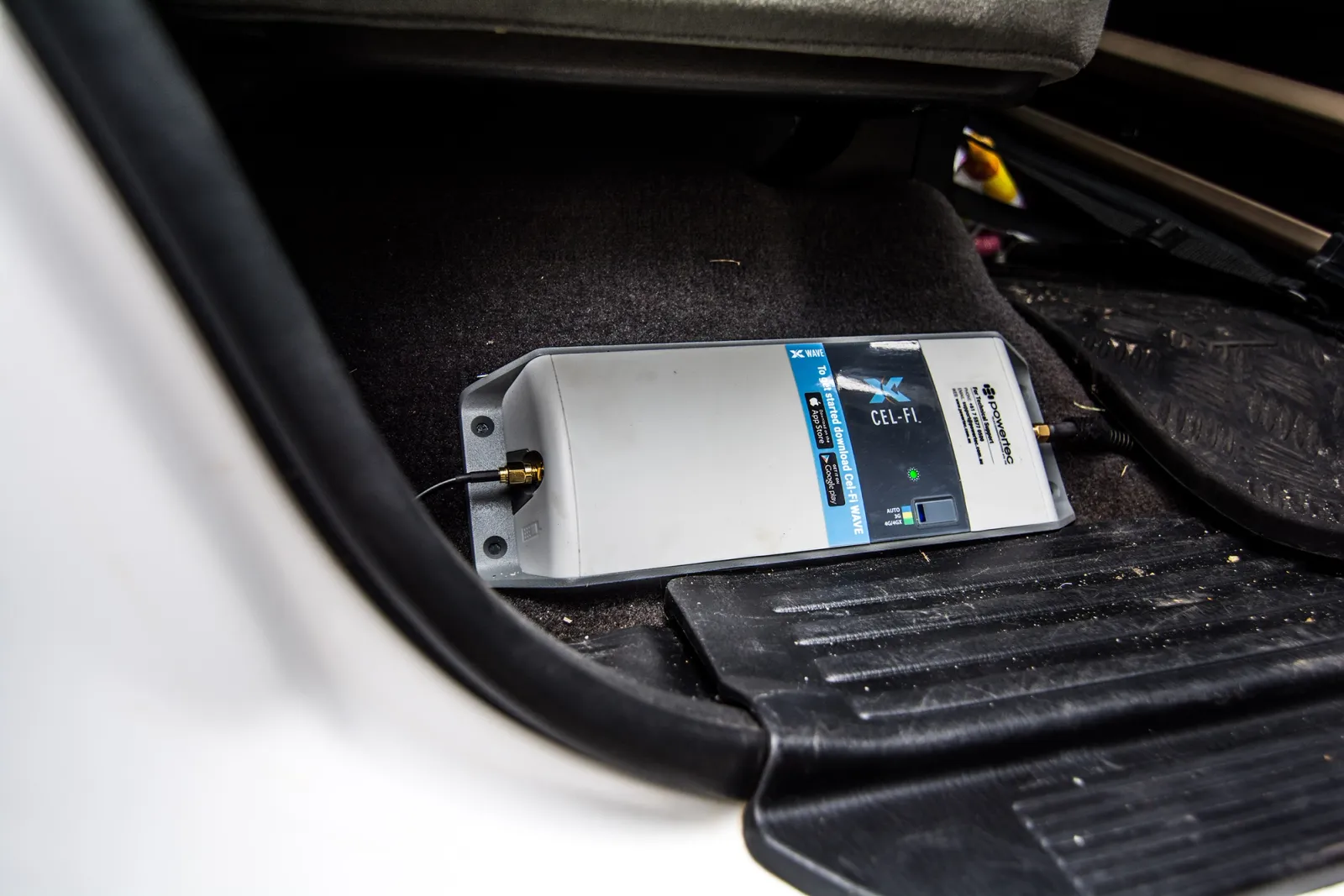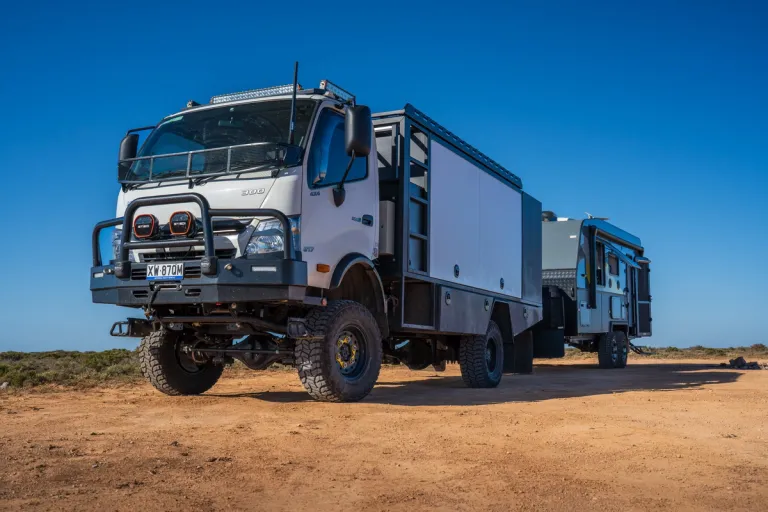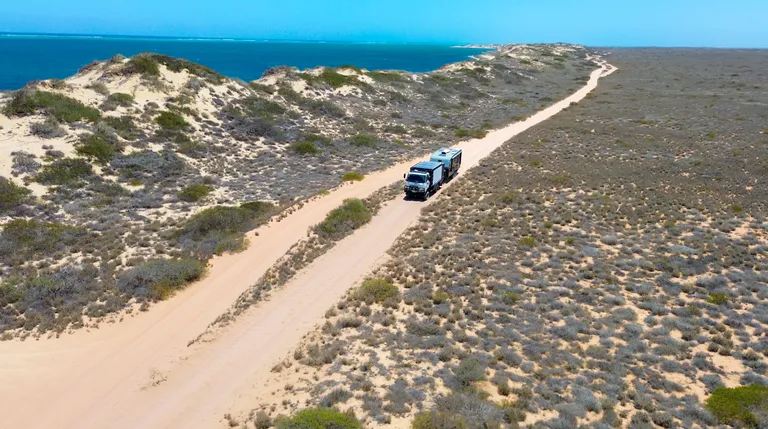Recently, we got a Cel-Fi GO installed in the Mobile HQ GU. If you haven’t heard about this thing, basically it is a mobile repeater, which can improve mobile reception in your vehicle. Intrigued about the concept, we decided to put it to the test to see how well it worked.
What is it?
Cel-Fi GO is a mobile repeater station for your vehicle. It works by receiving the network signal, amplifying it and then re-transmitting it within the vicinity of your vehicle. Your phone obtains the boosted signal from the GO to improve voice and internet connectivity.
Note: The Cel-Fi is carrier specific, so you need to buy the one that is designed to connect to whichever mobile network you are using. You also need to register the device with the carrier using a smartphone app.
The Cel-Fi GO consists of:
- Cel-Fi Unit
- An internal antenna, and
- An external Antenna
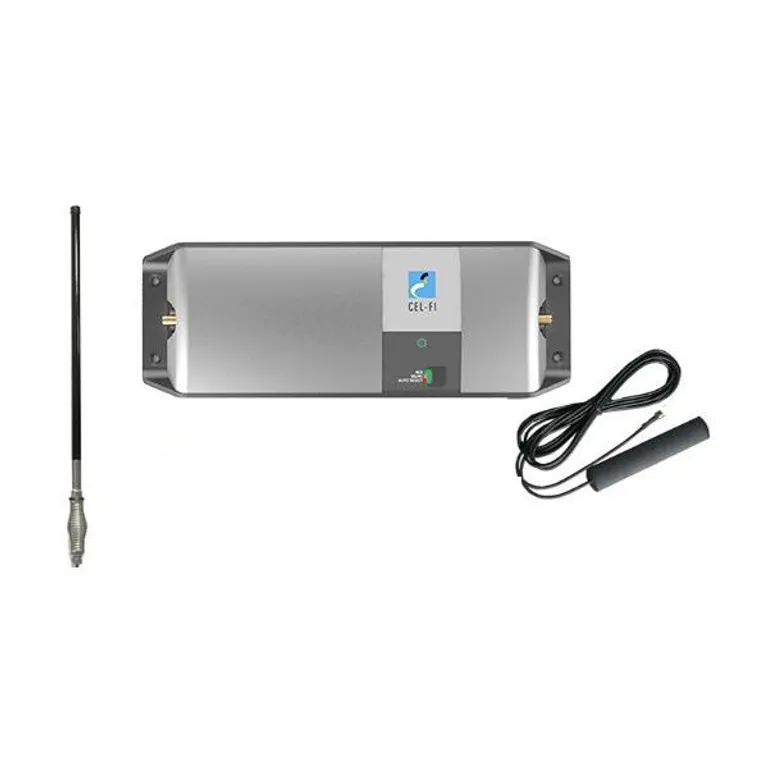
We had the Trucker pack installed in the HQGU, which provides up to 100dB of gain. To give you an idea of the amount of signal boost this provides, 100dB is 1000x stronger than the standard signal.
The test
It was important to me to be scientific in my testing. For that reason, I decided to drive to an area where I knew I would eventually lose reception, and then measure approximately every 500m the signal I could get with and without the Cel-Fi on. I started in an area where I knew I would have reception, and then tested and recorded the signal with and without the Cel-Fi on. We expressly had a switch installed to be able to turn the power to the Cel-Fi on and off, and I’d highly recommend this because it is useful if you want to leave it running with the car off, but also prevent it from draining the battery unnecessarily. The results are best summarised below. Additionally, I’ve included the Telstra coverage maps for 3G and 4G in that area.
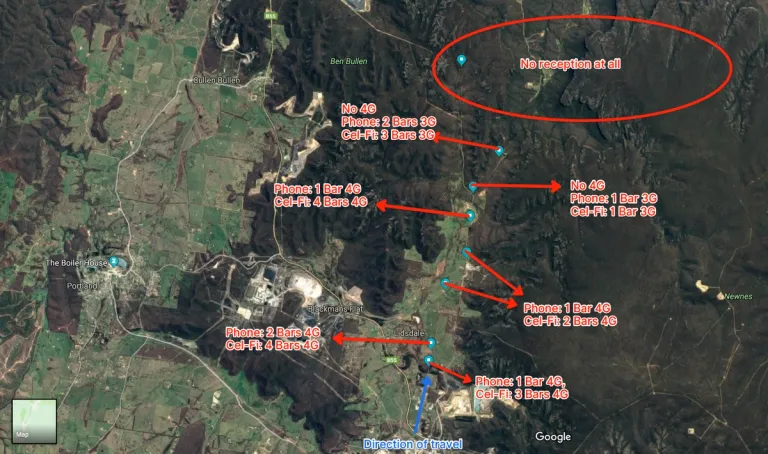
Testing results
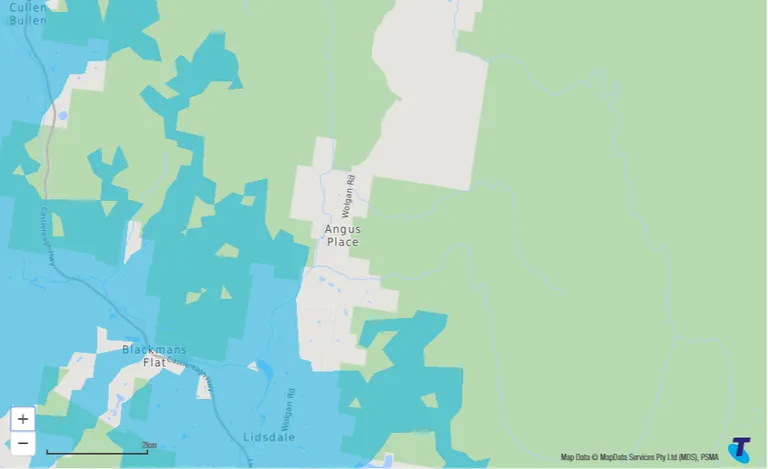
Telstra stated 4G coverage
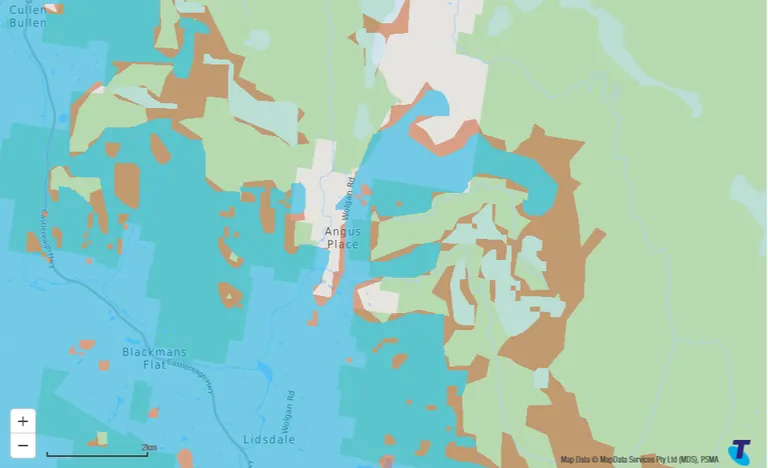
Telstra claimed 3G coverage
The result
In summary, the Cel-Fi GO would increase reception generally about 3 fold. I.E – from 1 bar to 3 bars or higher vs without the Cel-Fi. It also gave reception in places where Telstra claims no reception according to the maps, although not for significant distances beyond areas they claim coverage in the test area (maybe 1.5 – 2km),and this was in a valley which would obscure the signal depending on where the nearest tower is. This result was consistent in both 3G and 4G modes, which the GO can operate on.
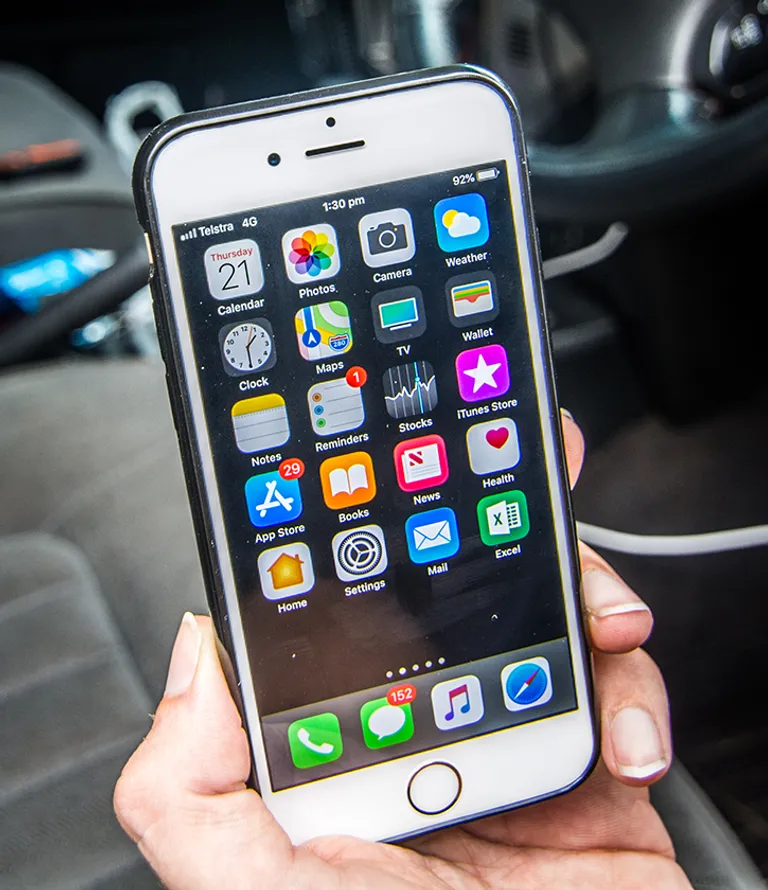
1 Bar of reception with the Cel-Fi off
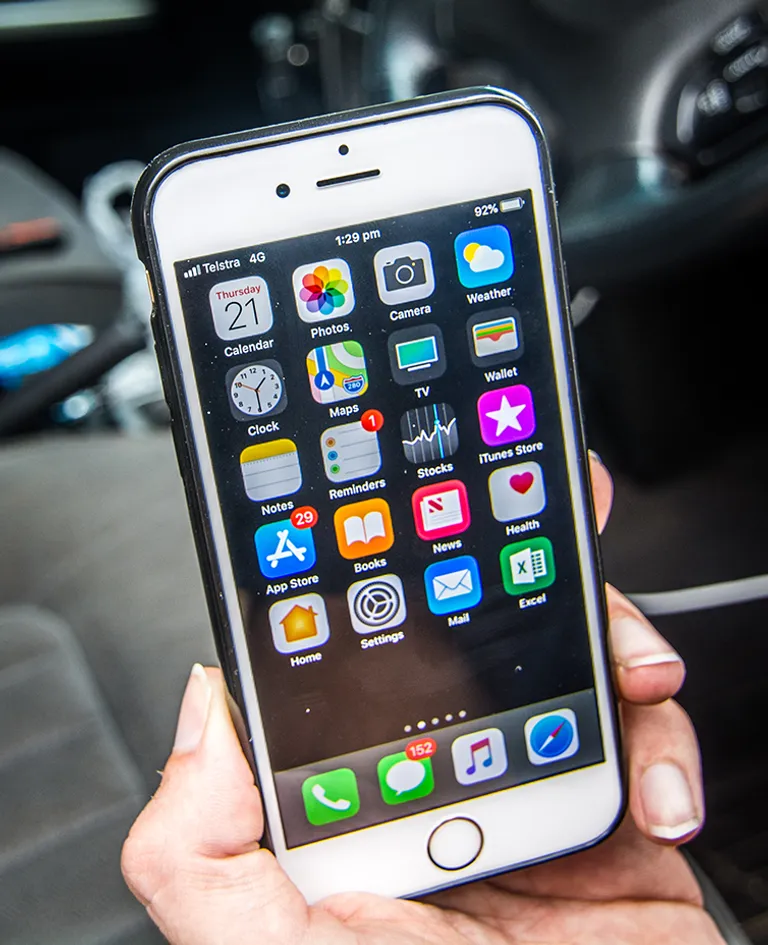
3 bars with Cel-Fi on
Interestingly, following the completion of this test, I decided to drive down into a valley back towards Lithgow, following some of the guys from Unsealed 4X4 on a bit of a drive. While down in the valley, I maintained 3 or more bars constantly with the Cel-Fi (in 3G mode), where people in other vehicles dropped down to 1 bar, often where it shows 1 bar of signal but would not make a call.
I also had the opportunity to tackle the Vic High Country with the Cel-Fi. While there were plenty of places where there was no reception at all, as we travelled I would find places where I could get reception. On top of Mt Pinibar for example, I could get 4 bars of 4G reception with the Cel-Fi on, where others could just get one bar and struggled to make a video call.
What does it cost?
The Cel-Fi Go costs about $1,200.00 to buy the kit, and then there is the installation. Jeremy Cooke from Advanced Installations Service (see www.advancedinstalls.com.au) installed our kit. They are based in Western Sydney, but also have a mobile service, and are specialists in getting the best out of 4WD’s – they even have a Dyno at their premises!
To have the kit properly installed will likely cost you between $220.00 and $280.00, depending on the complexity of the install. We’d recommend this to make sure the unit performs the way it is supposed to.
Where to find more information
The best place to start for more information is Powertec Communications – the Australian distributor of the Cel-Fi. You can find them at https://www.powertec.com.au/
Our conclusion?
If you are looking to improve your mobile reception, or your ability to use your mobile in areas where reception may be patchy, then we’d highly recommend the Cel-Fi. It significantly improved our ability to communicate. There are also aftermarket ways to further improve the Cel-fi’s performance too – you can get longer antennas which you could mount to the tow-bar of the vehicle when really remote, which will further improve then chances of getting a signal, and you can also get other antennas which will allow you to connect to the Cel-Fi when further away from your vehicle.
Given the initial investment required in the Cel-Fi, our recommendation is that you understand the network coverage limitations, likely places you want to use the thing, and then these additional options to ensure that you get the most from you investment. And that you realise that while it will significantly improve reception, it doesn’t replace the need to have some form of satellite based communication if you are heading really remote.
Got a question on our experience with the Cel-Fi? Comment below and we’ll respond!
Aiden


